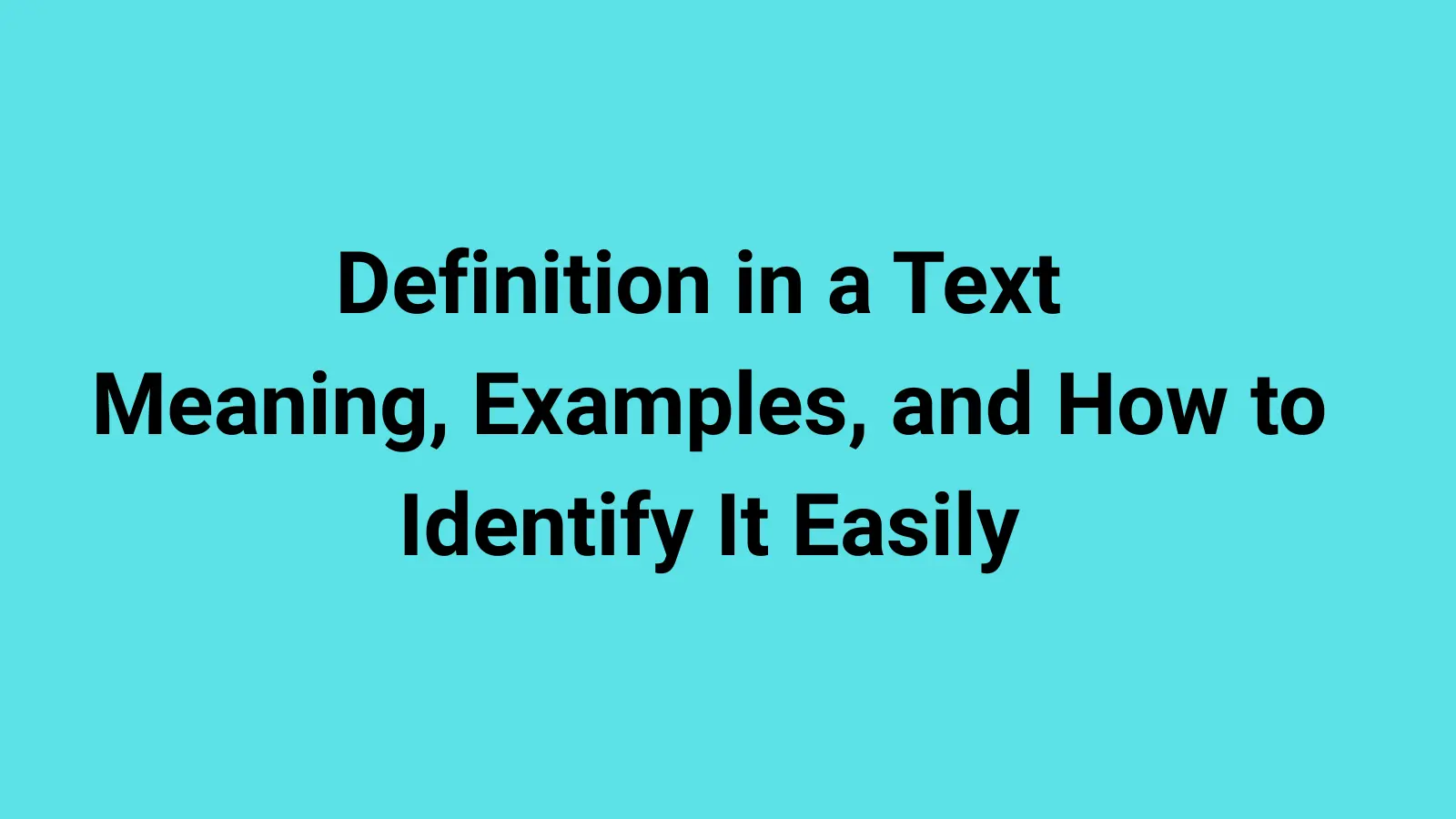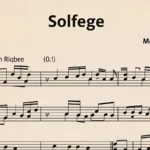When you come across a word you don’t understand, one of the most natural questions is: “What’s the definition in a text?”
Whether you’re reading an email, a novel, a research paper, or a social media post, knowing how to identify and understand a word’s definition in a text is a powerful skill. It’s not just about vocabulary—it’s about context, clarity, and communication.
In this detailed guide, we’ll unpack what “definition in a text” means, how authors reveal definitions, ways to find them quickly, and how the meaning of a word can shift depending on tone, audience, and purpose.
You’ll also get real examples, step-by-step decoding tips, and strategies for both casual readers and academic learners.
By the end, you’ll not only understand what “definition in a text” is—you’ll be able to spot and use it with confidence in any reading situation.
What Does “Definition in a Text” Mean?
At its simplest, a definition in a text is the explanation of a word, phrase, or concept provided within the text you’re reading. This can appear in different ways:
- Direct definition: The author clearly states what the term means.
- Contextual definition: You figure it out based on surrounding clues.
- Synonym definition: The text offers an equivalent word or phrase.
- Example-based definition: The author explains by giving concrete examples.
Think of a definition in a text as a built-in translator. Instead of reaching for a dictionary, you can use what’s written around the word to understand its meaning.
Why Definitions in Text Matter
Understanding a definition in a text is more than just vocabulary work—it’s about comprehension. Here’s why it matters:
- Boosts reading speed – No constant dictionary breaks.
- Improves comprehension – You get the nuance, not just the basic meaning.
- Enhances writing skills – You learn how to integrate explanations smoothly.
- Supports learning – Especially in academic or technical subjects.
- Prevents misunderstandings – You interpret the word as the author intended.
Types of Definition in a Text (With Examples)
1) Direct Statement Definition
The author tells you flat-out:
- “Photosynthesis is the process by which green plants make food using sunlight.”
2) Restatement/Synonym Definition
A synonym is given right after the word:
- “The fabric was translucent, or see-through.”
3) Example Definition
The term is explained through instances:
- “Celestial bodies, such as the sun, moon, and stars, fill the night sky.”
4) Contextual Definition
You piece together meaning from clues:
- “After hours of intense labor, she was exhausted.” (You deduce “exhausted” means very tired.)
How to Spot a Definition in a Text
When reading, watch for signal words and punctuation that hint a definition is coming:
- Signal words: is, are, means, refers to, defined as, in other words, that is
- Punctuation clues: commas, dashes, parentheses, colons
- Example starters: such as, for example, including, like
Example:
“A habitat is the natural home or environment of an animal, plant, or other organism.”
Here, “is” signals a direct definition.
Definition in a Text for Students
If you’re a student, spotting definitions quickly can make studying smoother. Teachers and textbooks often embed definitions right where new terms appear so you can learn without breaking flow.
Tips for students:
- Highlight signal words in your notes.
- Write the definition in your own words.
- Pair it with an example for memory.
- Create flashcards from textbook definitions in context.
Example in a science text:
“Evaporation, the process of turning liquid into vapor, occurs faster in warm temperatures.”
Definition in a Text for Academic Readers
In academic research, definitions often appear at the beginning of a paper or in a literature review. They help set the boundaries of discussion.
Academic-style definition clue:
- “For the purposes of this study, resilience is defined as an individual’s ability to adapt to stress and adversity.”
Why it matters in academia:
- Reduces ambiguity.
- Clarifies the scope of arguments.
- Ensures everyone uses terms the same way.
Definition in a Text for Everyday Readers
You don’t have to be a student to benefit from this skill. Everyday reading—novels, blogs, news articles—often hides definitions in plain sight.
Example from a novel:
“He was a polyglot, a person who could speak multiple languages with ease.”
Tip for casual readers:
- If you’re unsure, read one sentence before and after the term—it often reveals the meaning.
Strategies for Understanding a Definition in a Text Without a Dictionary
- Look for signal words.
- Check nearby sentences for clarifying phrases.
- See if examples are given—these often define by showing.
- Look for synonyms or antonyms.
- Consider tone and topic—formal vs. informal writing changes word choice.
When the Definition in a Text Is Hidden
Sometimes authors imply a definition without stating it outright—common in literature and creative writing.
Example:
“The boy shivered as the sleet pelted down—icy, sharp rain that stung his skin.”
You infer “sleet” means a type of cold, icy precipitation.
How to handle hidden definitions:
- Visualize the scene.
- Connect clues from adjectives or actions.
Difference Between “Definition in a Text” and “Dictionary Definition”
| Definition in a Text | Dictionary Definition |
| Personalized to the author’s context | Universal, standardized meaning |
| May be informal or creative | Formal, precise |
| Uses surrounding text for clarity | Stands alone |
| Can change depending on tone/topic | Consistent across uses |
Common Places to Find a Definition in a Text
- School textbooks – science, history, math terms
- Research papers – defined terms at the start
- Glossaries – mini-dictionaries in books
- Legal contracts – “Definitions” section
- Instruction manuals – explains technical words
- Fiction – character thoughts or narration may define terms for readers
How to Write a Definition in Your Own Text
If you’re writing, adding definitions can help readers follow along.
Steps:
- Introduce the term.
- Signal the definition (e.g., “is defined as”).
- Give a clear, concise meaning.
- Add an example if needed.
Example:
“Photosynthesis is the process by which plants create energy from sunlight, water, and carbon dioxide.”
Real-Life Examples of Definitions in a Text
From a news article:
“Inflation, the rate at which prices for goods and services rise, has been climbing steadily this year.”
From a blog:
“A digital detox means taking a break from screens to rest your mind and body.”
From a speech:
“By ‘innovation,’ I mean finding new ways to solve old problems.”
Challenges Readers Face with Definitions in a Text
- Too much jargon – The “definition” uses even more complex terms.
- Cultural references – Unclear if you don’t share the background knowledge.
- Implied meaning only – Requires strong inference skills.
Solution:
- Break down big words in the definition.
- Look for simpler restatements in the text.
Improving Your Skill at Spotting Definitions in a Text
- Practice with different genres: fiction, news, academic.
- Mark signal words in reading passages.
- Summarize definitions in your own words.
- Teach someone else—it reinforces your skill.
Summary of Key Points
- A definition in a text is an explanation of a term provided within the text itself.
- It can be direct, contextual, example-based, or synonym-based.
- Spot them using signal words, punctuation, and context clues.
- Students, professionals, and casual readers all benefit from this skill.
- Writing your own definitions helps others understand your message clearly.
Conclusion: You Now Understand “Definition in a Text”
From textbooks to tweets, definitions in a text act as bridges between writer and reader. They ensure clarity, prevent misunderstandings, and make learning smoother.
Now that you know how to spot, interpret, and even write them, you can navigate any text with more confidence—whether you’re tackling a dense academic paper or enjoying a weekend novel.











